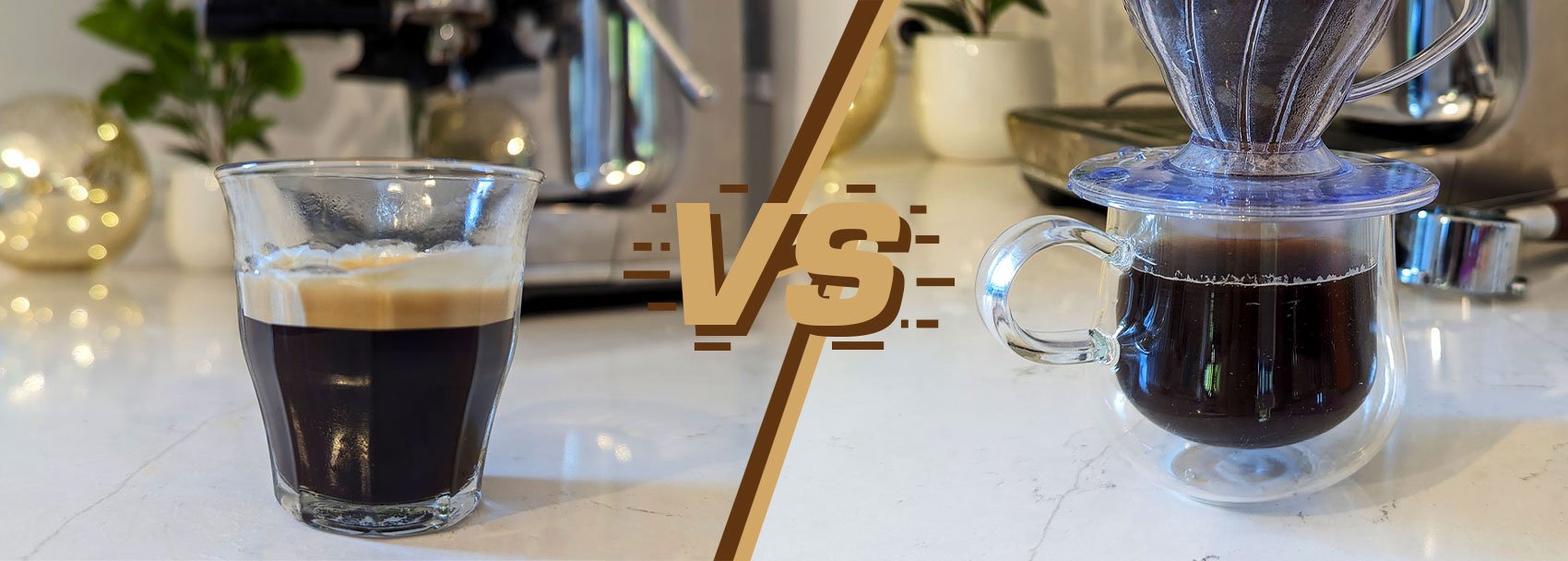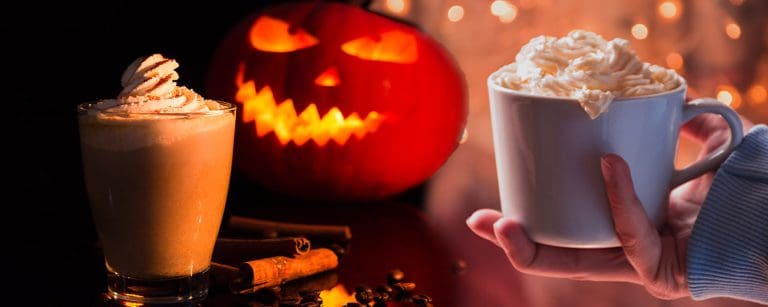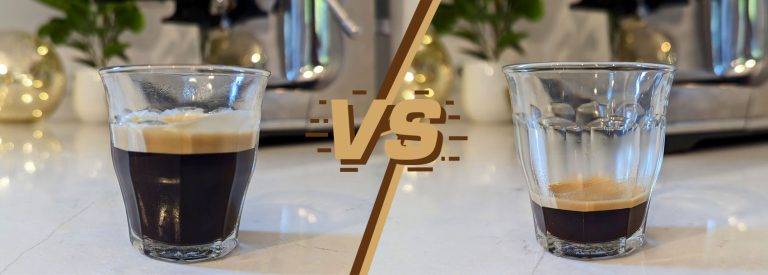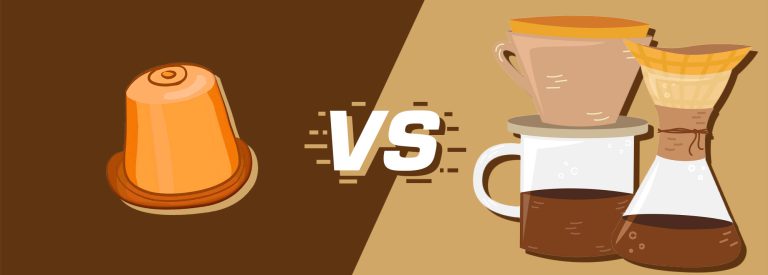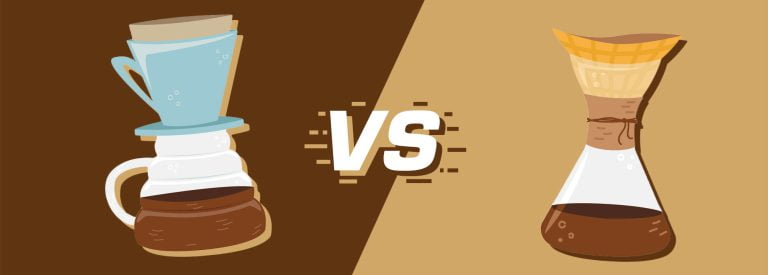Espresso vs Drip Coffee: A Clash of The Classics
When you imagine a cup of coffee, it’s often an espresso shot or drip coffee – but how different are they really?
If the specifics of these two beverages confuse you, let me help. I’ll share with you their ingredients, brew ratios, how to make them, and more. Once you’re done with this article, you’ll understand what separates an espresso from drip coffee.
What is an Espresso?
In 1901, Italian businessman Luigi Bezzera patented the first espresso machine which operates on high pressure to quickly brew coffee. The unique drink would go on to become a quintessential part of the global coffee culture.

A traditional Italian espresso uses 7g of ground coffee beans for a 1oz single shot and 14g for a 2oz double shot. Third-wave coffee uses slightly more, 9g for a single shot and 18g for a double. This is served in small cups called demitasse that have 2 to 3 oz (60 to 90 ml) capacity.
Espresso gives you an intense yet pleasing robustness with its rich flavors packed within a thick consistency, topped with a velvety crema. It combines bitter and sweet notes that are well accentuated by caramel and chocolate undertones along with subtle hints of nuts, depending on the beans you use. The actual brewing process creates layers in your cup as you pull your shot, so give it a stir to unravel those flavors before drinking.
If you want to produce better espresso, start with your choice of coffee beans. You can check out my list of the best espresso beans in 2024.
Here are the steps to get started with espresso:
- Weigh the coffee beans.
- Grind your coffee beans with the grinder set to fine.
- Tamp the coffee evenly in the portafilter.
- Connect the portafilter to the machine and pull your espresso, ensuring a steady flow.
- Serve in a pre-warmed demitasse.
To learn more, check out my step-by-step guide on how to make an espresso.
What is Drip Coffee?
Filtered coffee, more popularly known as drip coffee, has been satisfying caffeine needs since the 1900s. The brewing method for this type of coffee involves pouring hot water over coffee grounds, and the final coffee drink drips underneath.
As for the dripper apparatus, it can be the classic coffee machine, or one of the new wave drippers, like a Chemex or this Hario V60:
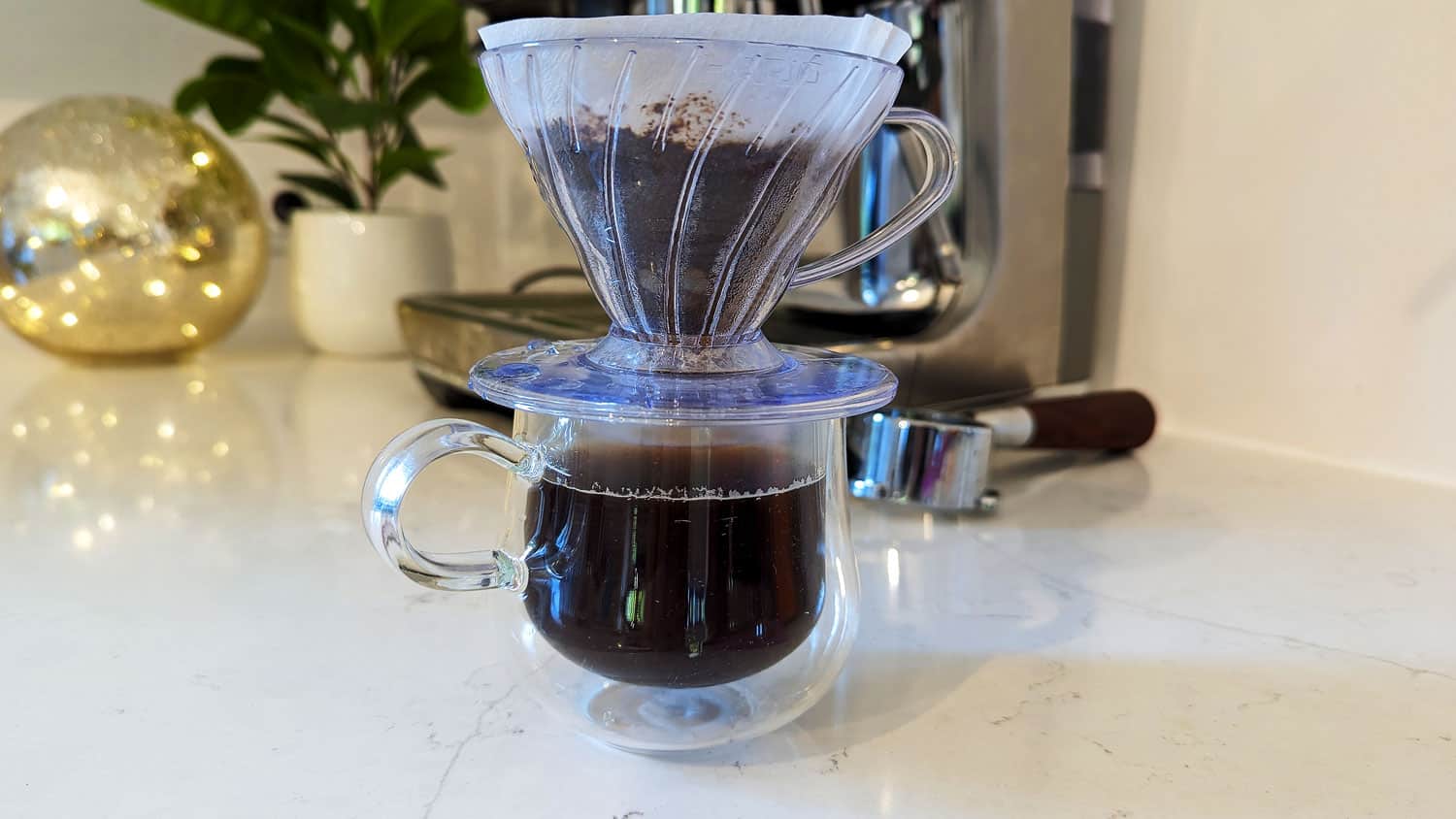
To prepare a 6oz (180ml) serving of filter coffee, use 10g of ground coffee and a brew ratio of 1:17. Your coffee should nicely fill up an average-sized mug with a capacity varying between 8 to 12 oz (240 to 360 ml).
Drip coffee’s light body goes hand in hand with its mild, clean, and straightforward taste, showing off the subtle nuances of the coffee beans. Notes of citrus, chocolate, or even floral undertones can also pop up but that depends on your coffee beans, roast level, and grind size.
These are the steps to make drip coffee:
- Grind your coffee to medium coarse.
- Add water to the drip machine’s reservoir.
- Place your filter and add the coffee grounds.
- Hit the “brew” button and wait for your coffee to drip into the pot. Or if you’re doing a manual pour-over, start pouring.
For more details, read my article on how to make drip coffee.
Espresso vs Drip Coffee: How The Two Drinks Compare
Here’s an overview of the differences between espresso and drip coffee:
| Aspect | Espresso | Drip Coffee |
|---|---|---|
| Taste and Texture | Robust and concentrated flavor with a creamy texture | Milder and more subdued flavor with a smooth texture |
| Coffee-to-Water Ratio | 1:2 to 1:3 | 1:17 |
| Ingredient Ratio | Just coffee | Just coffee |
| Typical Serving Size | 1 oz (30 ml) – 2 oz (60 ml) | 6 oz (180 ml) |
| Caffeine Content | 60-80 mg per 1 oz shot | 50-90 mg per 6 oz cup |
| Calories | 2 calories per shot | 2 calories per 6 oz cup |
| Acidity | Moderate | Generally moderate |
| Brewing Difficulty | Intermediate | Easy |
| Bean Roast | Prefers light to medium roasts | Prefers medium to dark roasts |
Now, let’s get into the nitty-gritty of what aspects set these two coffee drinks apart:
- Ground Coffee Weight & Ratios: A single shot of traditional espresso uses 7g of ground coffee (9g for third-wave coffee) with a 1:2 to 1:3 brew ratio for a single shot or 1oz serving of espresso. In contrast, drip coffee has a larger 1:17 coffee-to-water ratio, using 10g of coffee for a 6oz drink.
- Taste: Espresso boasts a robust, concentrated taste paired with a creamy texture and a frothy crema layer. Sure, it’s potent, but you can appreciate the balance in sweetness, bitterness, and acidity of each cup.
Then you have drip coffee that presents a milder, more subdued flavor than espresso. Compared to the velvety texture of espresso, drip coffee exhibits a clean and smooth consistency along with moderate acidity. - Volume, Calories, & Caffeine: Serving sizes greatly differ for the two drinks. An espresso shot is 1oz and a double shot is 2oz, while drip coffee has larger servings of 6oz and up. While one shot of espresso and 6oz of drip coffee contain 2 calories each, they differ in caffeine content as the espresso packs 60 to 80mg and drip coffee has 50 to 90mg of caffeine.
- Bean Roast: When you’re choosing coffee beans, I highly recommend light to medium roasts for espresso since they offer complex flavors with citrus or floral notes. I prefer the same roasts for drip coffee because their brightness and nuanced flavors translate well when being extracted through the drip method.
- Serving Suggestions: Ready to enjoy your espresso? Be sure to mix it well to blend the body, heart, and crema for the best taste. Drink it alongside a glass of sparkling water which acts as a palate cleanser to help you appreciate your espresso shot.
As for drip coffee, I love sipping on this brew with my breakfast. You can also opt for seasonal variations to shake up your morning routine. During the fall, I enjoy sipping on cinnamon coffee 🙂
Conclusion
Personally, I like espresso better than drip coffee because its rich and concentrated flavors give me the perfect kickstart in the morning. Compared to the smoothness of drip coffee, the thick texture of espresso is what really wins my palate. I will have pour-over coffee occasionally when I want to sip on coffee while working though.
That’s just me though, I’d love to know which one you like better. Share your thoughts in the comments below.

